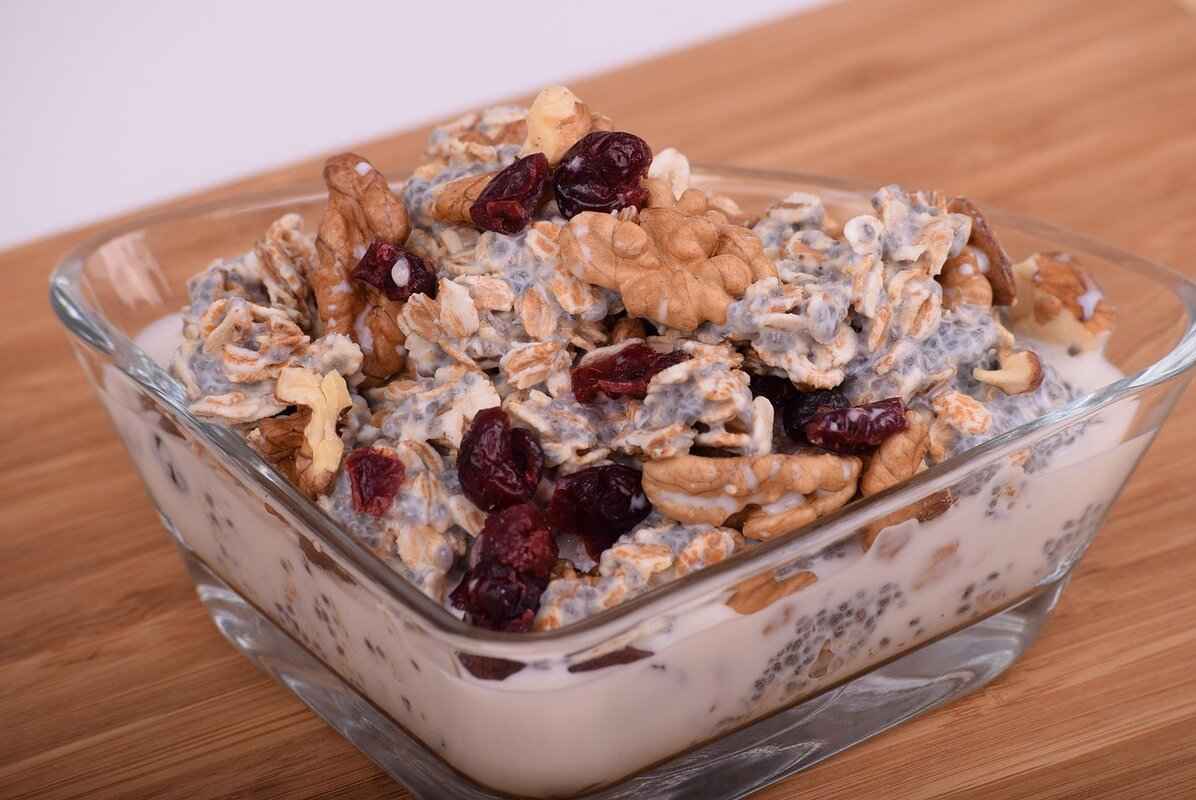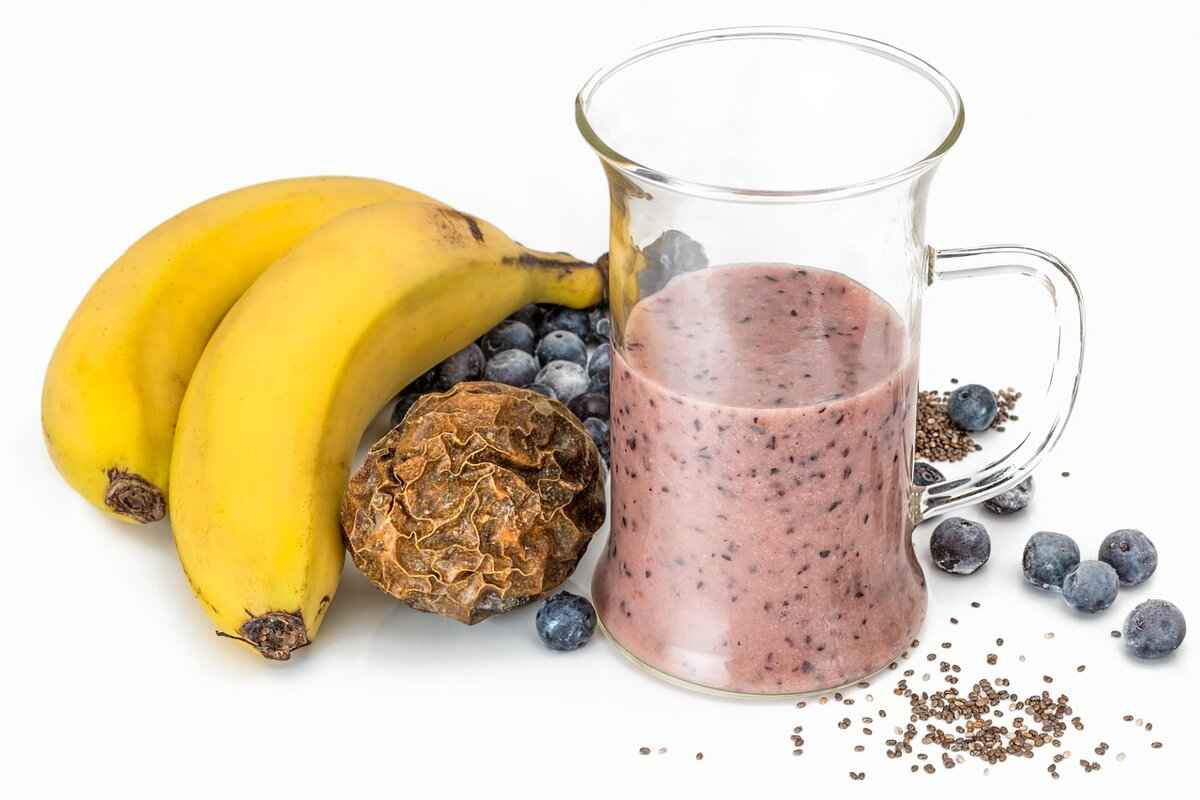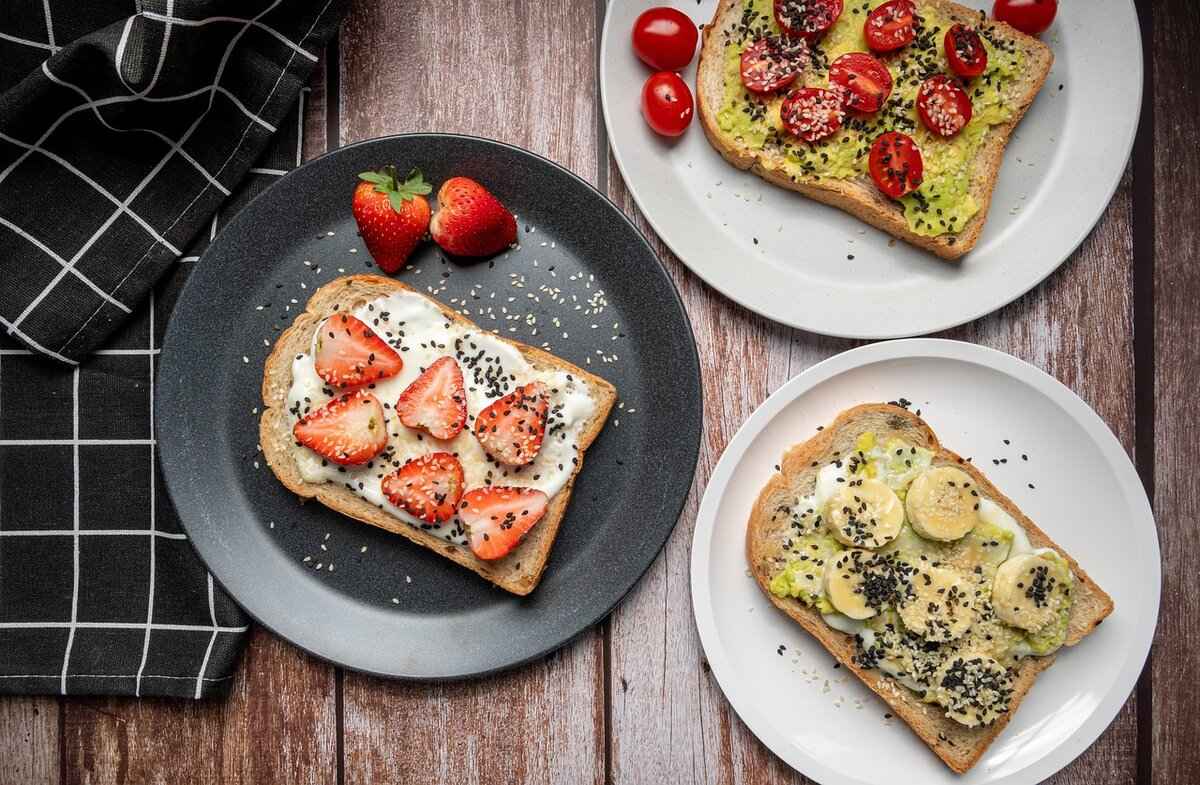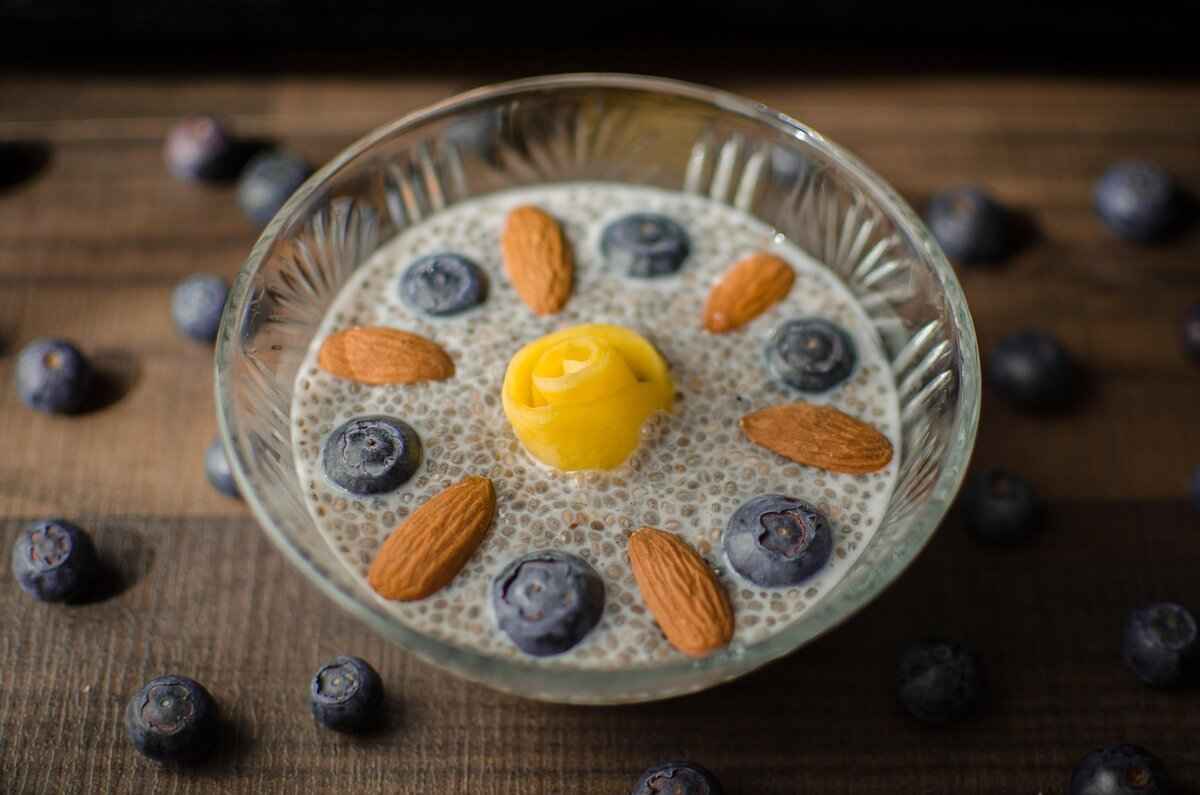Chia seed pudding is a delightful and nutritious dish that has gained popularity in health-conscious communities. This versatile food not only tantalizes your taste buds but also offers a plethora of health benefits that can enhance your daily diet. In this article, we will explore the remarkable advantages of chia seed pudding and why it is essential to incorporate it into your meals.
Chia seeds are tiny, nutrient-dense seeds derived from the Salvia hispanica plant. These tiny powerhouses are rich in fiber, protein, and omega-3 fatty acids, making them a popular superfood among health enthusiasts.
Chia seeds provide a variety of health benefits, including:
- Improved digestion: Thanks to their high fiber content, chia seeds promote healthy digestion and regular bowel movements.
- Heart health: The omega-3 fatty acids in chia seeds can help lower cholesterol levels and reduce the risk of heart disease.
- Enhanced energy levels: Chia seeds are an excellent source of sustained energy, making them a great addition to your meals.
Chia seeds are a powerhouse of essential nutrients. They contain high levels of calcium, magnesium, and antioxidants, which contribute to bone health and protect against oxidative stress.
The high fiber content in chia seeds aids digestion and promotes a feeling of fullness, which can help with weight management and prevent overeating. When combined with liquid, chia seeds can absorb up to 12 times their weight, creating a gel-like consistency that keeps you satiated.
Chia seeds are one of the best plant-based sources of omega-3 fatty acids, which are crucial for brain health and reducing inflammation in the body. Incorporating them into your diet can significantly benefit your overall health.
Chia seeds can be an effective tool for weight management due to their ability to absorb water and expand in the stomach. This property helps control hunger and reduces calorie intake, making chia seed pudding a smart choice for those looking to maintain or lose weight.
Chia seed pudding is incredibly versatile and can be prepared in various ways. Here’s a simple recipe to get you started:
Basic Chia Seed Pudding Recipe:1. Combine 2 tablespoons of chia seeds with 1 cup of your choice of milk (almond, coconut, or dairy).2. Add a sweetener like honey or maple syrup, if desired.3. Stir well and let it sit for at least 30 minutes or overnight in the refrigerator.4. Enjoy it plain or top it with fruits, nuts, or granola.
Experimenting with different flavors can enhance the taste of chia seed pudding. Consider adding:
- Vanilla extract for a classic flavor.
- Cocoa powder for a chocolatey treat.
- Fresh fruits like berries or bananas for natural sweetness.
Incorporating chia seed pudding into your daily routine can maximize its health benefits. Regular consumption can lead to long-term wellness and improved nutrient intake.
A typical serving size of chia seeds is about two tablespoons. This amount can easily be incorporated into your meals, whether as breakfast, a snack, or a dessert.
Chia seed pudding is an excellent meal prep option. It can be made in advance and stored in the refrigerator, providing a quick and healthy snack throughout the week. This convenience makes it easier to maintain a nutritious diet.
In conclusion, the incorporation of chia seed pudding into your diet can bring numerous health benefits, making it a worthwhile addition to your meals. With its rich nutrient profile and versatility, it’s no wonder that chia seed pudding is becoming a staple for many health-conscious individuals.

What Are Chia Seeds?
Chia seeds, derived from the Salvia hispanica plant, are tiny but mighty seeds that have gained immense popularity as a superfood in recent years. These nutrient-dense seeds, often referred to as “chia,” are packed with essential nutrients that can significantly benefit your health. In this article, we will delve into the remarkable properties of chia seeds and explore why they should be a staple in your diet.
Chia seeds are small, oval-shaped seeds that come in various colors, including white, black, and brown. They are rich in fiber, protein, and omega-3 fatty acids, making them an excellent addition to a balanced diet. Their unique ability to absorb water allows them to expand in size, forming a gel-like consistency that can enhance various dishes.
The term superfood is often used to describe foods that offer exceptional health benefits. Chia seeds fit this definition perfectly due to their impressive nutritional profile. They contain:
- High Fiber Content: Approximately 34 grams of fiber per 100 grams, promoting digestive health.
- Rich Source of Protein: Providing essential amino acids needed for muscle repair and growth.
- Omega-3 Fatty Acids: One of the best plant-based sources, beneficial for heart and brain health.
- Vitamins and Minerals: Including calcium, magnesium, and phosphorus, contributing to overall health.
Incorporating chia seeds into your diet can lead to numerous health advantages:
- Improved Digestion: The high fiber content aids in digestion and helps maintain a healthy gut.
- Heart Health: Omega-3 fatty acids in chia seeds can lower cholesterol levels and reduce inflammation.
- Weight Management: Their ability to absorb water and expand in the stomach can help control hunger and reduce calorie intake.
Chia seeds are incredibly versatile and can be easily added to a variety of dishes:
- Chia Seed Pudding: Combine chia seeds with your choice of milk and sweeteners, let it sit overnight, and enjoy a nutritious breakfast.
- Smoothies: Blend chia seeds into your favorite smoothies for added texture and nutrients.
- Baking: Substitute chia seeds for eggs in vegan recipes or sprinkle them on top of baked goods for a nutritious boost.
While chia seeds are generally safe for most people, some may experience mild side effects, such as:
- Bloating: Due to their high fiber content, excessive consumption may lead to bloating.
- Allergic Reactions: Though rare, some individuals may be allergic to chia seeds.
It’s advisable to start with a small amount and gradually increase your intake to allow your digestive system to adjust.
Chia seeds are a powerhouse of nutrition, offering a multitude of health benefits that can enhance your overall well-being. By incorporating these tiny seeds into your daily diet, you can enjoy their rich nutrient profile and promote a healthier lifestyle.

How Do Chia Seeds Benefit Your Health?
Chia seeds are often hailed as a superfood, and for good reason. These tiny seeds pack a powerful punch when it comes to health benefits. From promoting digestive health to supporting heart function and boosting energy levels, chia seeds are an excellent addition to any diet. In this section, we will explore the various ways in which chia seeds can enhance your overall well-being.
Chia seeds provide a multitude of health benefits, including improved digestion, heart health, and enhanced energy levels. Their impressive nutrient profile supports overall wellness, making them an essential component of a balanced diet.
The high fiber content in chia seeds plays a crucial role in promoting digestive health. With approximately 11 grams of fiber per ounce, these seeds help regulate bowel movements and prevent constipation. The soluble fiber in chia seeds absorbs water, forming a gel-like substance that slows digestion and promotes a feeling of fullness. This can be particularly beneficial for individuals looking to manage their weight.
Chia seeds are rich in omega-3 fatty acids, which are essential for heart health. These healthy fats help reduce inflammation and lower cholesterol levels, contributing to a healthier cardiovascular system. Studies have shown that incorporating chia seeds into your diet can lower blood pressure and reduce the risk of heart disease. Additionally, their high antioxidant content helps combat oxidative stress, further protecting your heart.
For those looking to enhance their energy levels, chia seeds can be a game-changer. Packed with protein, healthy fats, and fiber, they provide a sustained release of energy, making them an excellent snack for athletes and active individuals. The combination of nutrients in chia seeds helps maintain stable blood sugar levels, preventing energy crashes that often accompany high-sugar snacks.
Chia seeds are a powerhouse of essential nutrients. They contain significant amounts of calcium, magnesium, and antioxidants, which contribute to bone health and protect against oxidative stress. Just two tablespoons of chia seeds offer:
- 5 grams of protein
- 11 grams of fiber
- 18% of the recommended daily intake of calcium
- 27% of the recommended daily intake of magnesium
The unique property of chia seeds to absorb water and expand in the stomach aids in appetite control. This can help reduce overall calorie intake, making them an effective tool for weight management. By incorporating chia seeds into meals or snacks, individuals can feel fuller for longer, which may lead to healthier eating habits.
Chia seeds can be easily incorporated into your diet in various ways. They can be added to smoothies, yogurt, or oatmeal, or used as an egg substitute in baking. Their ability to absorb liquid makes them a popular choice for making chia seed pudding, a delicious and nutritious dish that can be customized with different flavors and toppings.
To reap the health benefits of chia seeds, a typical serving size is about two tablespoons. This amount can be easily incorporated into your daily meals, whether as breakfast, a snack, or a dessert. Regular consumption can contribute to long-term wellness and improved nutrient intake.
In summary, the health benefits of chia seeds are extensive, making them an excellent addition to any diet. From improving digestion and supporting heart health to boosting energy levels, these tiny seeds can have a significant impact on your overall well-being.
Rich in Nutrients
Chia seeds are often hailed as a superfood, and for good reason. These tiny seeds, derived from the Salvia hispanica plant, are packed with a variety of essential nutrients that contribute significantly to overall health and wellness. In this section, we will explore the remarkable nutrient profile of chia seeds and how these nutrients can enhance your daily diet.
Chia seeds are rich in several vital nutrients, making them a valuable addition to any diet. They are particularly known for their high content of:
- Calcium: Essential for maintaining strong bones and teeth, chia seeds provide a plant-based source of calcium, which is especially beneficial for those who are lactose intolerant or follow a vegan diet.
- Magnesium: This mineral plays a crucial role in over 300 enzymatic reactions in the body, including energy production, muscle function, and nerve transmission. Chia seeds are an excellent source of magnesium, helping to support overall bodily functions.
- Antioxidants: Chia seeds are loaded with antioxidants, which help combat oxidative stress in the body. This can reduce the risk of chronic diseases and promote long-term health.
The combination of calcium, magnesium, and antioxidants found in chia seeds offers a multitude of health benefits:
- Bone Health: The high levels of calcium and magnesium in chia seeds contribute to improved bone density and strength, reducing the risk of osteoporosis.
- Heart Health: Antioxidants help protect the heart by reducing inflammation and oxidative stress, while the omega-3 fatty acids found in chia seeds support cardiovascular health.
- Digestive Health: The fiber content in chia seeds promotes healthy digestion and regularity, while also providing a feeling of fullness that can aid in weight management.
Interestingly, chia seeds are also considered a complete protein source, containing all nine essential amino acids. This makes them an excellent option for vegetarians and vegans looking to meet their protein needs. Incorporating chia seeds into your meals can help support muscle repair and growth, making them a fantastic addition to a post-workout snack or meal.
Adding chia seeds to your diet is incredibly easy and versatile. Here are some practical tips:
- Chia Seed Pudding: Combine chia seeds with your choice of milk and let them soak overnight for a delicious and nutritious breakfast or snack.
- Smoothies: Add a tablespoon of chia seeds to your smoothies for an extra boost of nutrients and fiber.
- Baking: Incorporate chia seeds into baked goods, such as muffins or bread, for added nutrition.
To reap the health benefits of chia seeds, it is generally recommended to consume about two tablespoons per day. This serving size provides a substantial amount of nutrients without overwhelming your diet. Whether you sprinkle them on salads, blend them into smoothies, or mix them into yogurt, chia seeds can easily fit into your daily routine.
In conclusion, chia seeds are a powerhouse of nutrients that can greatly enhance your health. Their rich content of calcium, magnesium, and antioxidants, combined with their versatility in the kitchen, makes them an ideal choice for anyone looking to improve their diet. By incorporating chia seeds into your meals regularly, you can enjoy their numerous health benefits and support your overall well-being.
High in Fiber
Chia seeds, often hailed as a superfood, are not only versatile but also incredibly nutritious. One of their standout features is their high fiber content, which plays a significant role in digestive health and weight management. This article delves into the benefits of fiber found in chia seeds and how it can enhance your overall well-being.
Fiber is an essential component of a healthy diet, contributing to various bodily functions. It is classified into two types: soluble and insoluble fiber. Both types have unique benefits:
- Soluble Fiber: This type dissolves in water, forming a gel-like substance that can help lower cholesterol and stabilize blood sugar levels.
- Insoluble Fiber: This type adds bulk to your stool and aids in moving food through the digestive tract, promoting regularity.
The fiber in chia seeds is predominantly soluble, which means it absorbs water and expands in the stomach. This process not only promotes a feeling of fullness but also slows down the digestion process, allowing for better nutrient absorption. By incorporating chia seeds into your diet, you can:
- Improve regularity and prevent constipation.
- Enhance gut health by supporting beneficial gut bacteria.
- Reduce the risk of digestive disorders.
Yes! The high fiber content in chia seeds is particularly beneficial for those looking to manage their weight. When consumed, chia seeds swell in the stomach, creating a sensation of fullness that can help prevent overeating. This property makes them an excellent addition to meals and snacks, as they can:
- Help control hunger pangs.
- Encourage healthier eating habits by reducing cravings.
- Support a balanced diet when combined with other nutritious foods.
Adding chia seeds to your meals is simple and can be done in various ways. Here are some popular methods:
- Chia Seed Pudding: Combine chia seeds with milk or a milk alternative and let them soak overnight for a delicious breakfast or snack.
- Smoothies: Blend chia seeds into your favorite smoothies for an extra nutrient boost.
- Baking: Add chia seeds to baked goods like muffins or bread for added texture and nutrition.
Chia seeds are not just high in fiber; they also boast a rich nutritional profile, including:
- Approximately 11 grams of fiber per ounce.
- High levels of omega-3 fatty acids, which are beneficial for heart health.
- Essential minerals such as calcium, magnesium, and phosphorus.
In summary, the high fiber content in chia seeds offers numerous health benefits, particularly in aiding digestion and supporting weight management. By incorporating these tiny seeds into your daily diet, you can enjoy a healthier lifestyle while reaping the rewards of their impressive nutrient profile.
Source of Omega-3 Fatty Acids
Chia seeds have gained immense popularity in the health community, and for good reason. Among their many benefits, one of the most significant is their role as a rich source of omega-3 fatty acids. These essential fats are crucial for maintaining optimal brain function and reducing inflammation throughout the body.
Omega-3 fatty acids are a type of polyunsaturated fat that the body cannot produce on its own, making it vital to obtain them from dietary sources. They play a crucial role in various bodily functions, including:
- Brain Health: Omega-3s are integral to brain structure and function. They support cognitive processes, including memory and learning.
- Heart Health: These fatty acids help lower blood pressure, reduce triglycerides, and decrease the risk of heart disease.
- Anti-Inflammatory Properties: Omega-3s can help reduce inflammation, which is linked to various chronic diseases, including arthritis and heart disease.
While fish and certain oils are well-known sources of omega-3s, chia seeds stand out as one of the best plant-based alternatives. A single ounce (about 28 grams) of chia seeds contains approximately 5 grams of omega-3 fatty acids, primarily in the form of alpha-linolenic acid (ALA). This makes them an excellent choice for vegetarians and vegans seeking to boost their omega-3 intake.
Incorporating chia seeds into your daily meals is easy and versatile. Here are some practical ideas:
- Chia Seed Pudding: Mix chia seeds with your favorite milk and let them soak overnight for a nutritious breakfast or snack.
- Smoothies: Add a tablespoon of chia seeds to your morning smoothie for an extra nutrient boost.
- Baking: Incorporate chia seeds into baked goods like muffins or bread for added texture and nutrition.
- Salads: Sprinkle chia seeds on salads for a crunchy topping that enhances both flavor and nutrient content.
The American Heart Association recommends consuming at least two servings of fatty fish per week, which equates to about 500 mg of EPA and DHA (the two main types of omega-3s found in fish). For those relying on plant sources like chia seeds, a daily intake of around 1.6 grams for men and 1.1 grams for women is suggested, making chia seeds a valuable addition to your diet.
While chia seeds are generally safe for most people, it’s important to consume them in moderation. Due to their high fiber content, excessive intake can lead to digestive issues. Always ensure you drink plenty of water when consuming chia seeds to aid digestion.
In summary, chia seeds are a fantastic source of omega-3 fatty acids, providing numerous health benefits that support brain health and reduce inflammation. Their versatility makes them easy to incorporate into various meals, ensuring you can enjoy their nutritional benefits daily.
How Do Chia Seeds Aid in Weight Management?
Chia seeds, often hailed as a superfood, have gained popularity for their numerous health benefits, particularly in the realm of weight management. Their unique properties make them a valuable addition to any diet aimed at achieving or maintaining a healthy weight.
One of the key reasons chia seeds are effective for weight management is their remarkable ability to absorb water. When chia seeds come into contact with liquid, they can expand up to 10-12 times their original size, forming a gel-like consistency. This property plays a crucial role in promoting a feeling of fullness.
By expanding in the stomach, chia seeds help to control hunger pangs. This sensation of fullness can lead to reduced calorie intake, making it easier to adhere to a weight loss regimen. Studies have shown that incorporating high-fiber foods like chia seeds into meals can significantly decrease overall food consumption.
Despite their ability to fill you up, chia seeds are relatively low in calories. A typical serving of two tablespoons contains about 140 calories, making them an excellent option for those looking to manage their weight without feeling deprived. When combined with other nutritious ingredients, they can create satisfying meals that are both healthy and delicious.
The high fiber content in chia seeds not only aids digestion but also helps regulate blood sugar levels. This regulation can prevent the spikes and crashes in energy that often lead to cravings and overeating. By maintaining stable blood sugar levels, chia seeds can contribute to a more balanced metabolism, further supporting weight management efforts.
- Chia Seed Pudding: A popular choice, chia seed pudding can be made by soaking chia seeds in milk or a milk alternative. Add sweeteners or fruits for flavor.
- Smoothies: Blend chia seeds into smoothies for an added boost of fiber and nutrients.
- Salads: Sprinkle chia seeds on salads for an extra crunch and nutritional punch.
- Baking: Incorporate chia seeds into baked goods for added texture and health benefits.
For long-term weight management, consistency is key. Regularly incorporating chia seeds into your meals can help establish healthy eating habits. Their ability to promote satiety can lead to a natural reduction in calorie intake over time, aiding in sustainable weight loss.
While chia seeds are generally safe for most individuals, it’s essential to consume them in moderation. Due to their high fiber content, excessive intake can lead to digestive discomfort. Always ensure you drink plenty of water when consuming chia seeds to aid their digestion.
In summary, chia seeds are a powerful ally in the quest for effective weight management. Their unique properties, combined with their nutritional benefits, make them an ideal choice for anyone looking to improve their dietary habits and achieve their weight goals.

What Are the Best Ways to Prepare Chia Seed Pudding?
Chia seed pudding is a delightful and nutritious dish that has gained immense popularity in recent years. Its versatility allows for endless variations, making it a favorite among health enthusiasts. In this section, we will explore the best ways to prepare chia seed pudding, ensuring that you can enjoy this superfood in a way that suits your taste and dietary preferences.
Chia seed pudding is incredibly versatile and can be prepared in various ways. Combining chia seeds with different liquids and flavors can create delicious and nutritious meals. Here are some of the best methods to prepare this healthy treat:
- Classic Chia Seed Pudding: The basic recipe involves mixing 2 tablespoons of chia seeds with 1 cup of your favorite milk (dairy or plant-based) and a sweetener of your choice, such as honey or maple syrup. Stir well and let it sit in the fridge for at least 4 hours or overnight to achieve a creamy texture.
- Fruit-Infused Variations: Enhance your chia pudding by adding pureed fruits like bananas, mangoes, or berries. Simply blend the fruit with the milk before mixing in the chia seeds. This not only adds flavor but also increases the nutritional value of your pudding.
- Cocoa Delight: For chocolate lovers, mix in 2 tablespoons of unsweetened cocoa powder with your milk and sweetener. This creates a rich and indulgent dessert that satisfies sweet cravings while remaining healthy.
- Spiced Chia Pudding: Add a pinch of cinnamon or nutmeg to your basic recipe for a warm flavor profile. This can be especially comforting in the colder months and pairs well with warm spices.
- Layered Parfait: Create a visually appealing parfait by layering chia pudding with yogurt and fresh fruits in a glass. This not only looks great but also provides a variety of textures and flavors in each bite.
Customization is key to making chia seed pudding an enjoyable part of your diet. Here are some tips to personalize your pudding:
- Sweeteners: Experiment with different sweeteners such as agave syrup, stevia, or coconut sugar to find the perfect level of sweetness for your palate.
- Liquid Bases: While almond milk and coconut milk are popular choices, don’t hesitate to try oat milk, soy milk, or even fruit juices for unique flavors.
- Toppings: Top your pudding with nuts, seeds, granola, or shredded coconut for added crunch and nutrition. Fresh herbs like mint can also provide a refreshing twist.
Yes! Chia seed pudding is an excellent option for meal prep. You can prepare several servings at once and store them in individual containers in the refrigerator. This makes it easy to grab a healthy snack or breakfast on the go. Just remember to stir well before serving, as the pudding may thicken over time.
In summary, chia seed pudding is not only versatile but also easy to prepare. With various flavor combinations and customization options, you can create a dish that is both delicious and nutritious. Whether you enjoy it as a breakfast, snack, or dessert, incorporating chia seed pudding into your diet can be a delightful experience.
Basic Chia Seed Pudding Recipe
Chia seed pudding is not only a delightful treat but also a nutritional powerhouse. Its simplicity makes it accessible to everyone, and its versatility allows for countless variations. If you’re looking to incorporate a healthy snack or breakfast option into your routine, chia seed pudding is the perfect choice.
To make a basic chia seed pudding, you’ll need just a few essential ingredients:
- Chia Seeds: These tiny seeds are the star of the dish.
- Milk: You can use any type of milk, such as almond, coconut, soy, or dairy.
- Sweetener: Maple syrup, honey, or agave nectar work well.
- Flavorings: Vanilla extract or cocoa powder can enhance the taste.
The preparation of chia seed pudding is incredibly straightforward:
1. In a mixing bowl, combine 1/4 cup of chia seeds with 1 cup of your chosen milk.2. Add 1-2 tablespoons of sweetener and any additional flavorings you desire.3. Stir the mixture well to ensure there are no clumps of chia seeds.4. Cover the bowl and refrigerate it overnight (or for at least 4 hours).5. Once the pudding has thickened to a creamy consistency, give it a good stir before serving.
While the basic recipe is delicious on its own, you can easily customize it to suit your taste:
- Fruit-Infused: Add pureed fruits like mango or berries for natural sweetness and flavor.
- Chocolate Delight: Mix in cocoa powder and top with chocolate chips for a decadent treat.
- Nutty Twist: Stir in nut butters like almond or peanut for added protein and richness.
Chia seed pudding is incredibly versatile. Here are some ideas for incorporating it into your meals:
- As a breakfast option: Serve it with fresh fruits, nuts, or granola.
- As a snack: Enjoy it on its own or mix it with yogurt for added creaminess.
- As a dressing: Use it as a base for smoothies or parfaits.
To reap the full benefits of chia seeds, consider enjoying chia pudding several times a week. Not only does it provide essential nutrients, but it also keeps you feeling full and satisfied. Aim for a serving size of about two tablespoons of chia seeds per serving, which can easily fit into your daily meal plan.
In conclusion, the basic chia seed pudding recipe is a fantastic way to boost your nutrition without sacrificing flavor. With just a few simple ingredients and endless possibilities for customization, it’s a dish you’ll want to keep in your meal rotation.
Flavor Variations
in chia seed pudding can significantly transform your experience of this nutritious dish. By incorporating a range of flavors, you can create a delightful array of puddings that cater to your taste buds while reaping the health benefits of chia seeds. Here, we will explore various flavor options that can elevate your chia pudding, making it a versatile and enjoyable addition to your diet.
- Vanilla: Adding a splash of vanilla extract is a classic choice that brings warmth and sweetness to your chia pudding. This flavor pairs well with almost any topping, from fresh fruits to nuts.
- Cocoa: For chocolate lovers, incorporating cocoa powder or melted dark chocolate can create a rich, indulgent treat. This variation not only satisfies your sweet tooth but also provides antioxidants.
- Fruits: Fresh or frozen fruits like berries, bananas, or mango can add natural sweetness and vibrant colors to your pudding. Blending fruits into the base or layering them on top creates a visually appealing and nutritious meal.
- Nut Butters: Stirring in almond, peanut, or cashew butter can add creaminess and a dose of healthy fats. This combination is perfect for a filling breakfast or snack.
- Spices: Experimenting with spices like cinnamon, nutmeg, or ginger can introduce a warm, aromatic element to your pudding. These spices not only enhance flavor but also offer additional health benefits.
- Matcha: For a unique twist, try adding matcha powder. This green tea powder provides a boost of antioxidants and a subtle earthy flavor, perfect for those looking for something different.
- Coconut: Incorporating coconut milk or shredded coconut can give your chia pudding a tropical flair. This variation is not only delicious but also adds healthy fats to your meal.
When preparing your chia seed pudding, consider the liquid base you use. Almond milk, coconut milk, or even oat milk can all serve as excellent bases, each imparting its unique flavor profile. The key to a great chia pudding is to find the right balance between the chia seeds and the liquid, ensuring a creamy texture without being too runny or too thick.
To create a layered pudding, alternate layers of chia pudding with layers of fruit puree or yogurt. This not only enhances the visual appeal but also allows you to enjoy multiple flavors in one serving. Additionally, topping your pudding with granola, seeds, or nuts can add a satisfying crunch and extra nutrition.
As you explore these flavor variations, remember that the possibilities are virtually endless. You can mix and match different ingredients to suit your preferences and dietary needs. The versatility of chia seed pudding means that it can easily adapt to seasonal ingredients, ensuring that your meals remain exciting and fresh.
In conclusion, experimenting with flavors such as vanilla, cocoa, or fruit can significantly enhance the taste of chia seed pudding. By incorporating diverse ingredients, you not only make your meals more enjoyable but also ensure that you are getting a wide range of nutrients. Consider trying out different combinations to discover your favorite flavors and make chia seed pudding a delightful staple in your diet.

How Often Should You Eat Chia Seed Pudding?
Incorporating chia seed pudding into your daily diet can significantly enhance your overall health and well-being. This nutrient-rich dish is not only delicious but also packed with essential vitamins and minerals that can help you meet your daily nutritional needs. By consuming chia seed pudding regularly, you can take advantage of its numerous health benefits, leading to improved nutrient intake and long-term wellness.
Regularly consuming chia seed pudding allows you to maximize its health benefits. This superfood is rich in fiber, protein, and omega-3 fatty acids, which are crucial for maintaining a balanced diet. By making chia seed pudding a part of your daily meals, you can ensure that your body receives these essential nutrients consistently.
Chia seeds are known for their ability to support various aspects of health. Here are some key benefits:
- Improved Digestion: The high fiber content in chia seeds promotes gut health and regular bowel movements.
- Heart Health: Omega-3 fatty acids support cardiovascular health by reducing inflammation and lowering cholesterol levels.
- Weight Management: Chia seeds can help control appetite, making it easier to maintain a healthy weight.
There are countless ways to enjoy chia seed pudding, making it easy to incorporate into your daily routine. Here are a few suggestions:
- Breakfast: Top your chia pudding with fresh fruits, nuts, or granola for a nutritious start to your day.
- Snacks: Enjoy it as a healthy snack between meals to keep your energy levels stable.
- Desserts: Sweeten it with honey or maple syrup and add cocoa powder for a guilt-free dessert.
Chia seed pudding is an excellent option for meal prep. You can prepare multiple servings at once and store them in the refrigerator for quick access throughout the week. Here’s how:
1. Mix chia seeds with your choice of milk (dairy or plant-based).2. Add sweeteners and flavorings (like vanilla or cinnamon).3. Let it sit overnight to thicken.4. Store in individual containers for easy grab-and-go meals.
A typical serving size of chia seeds is about two tablespoons. This amount provides a substantial dose of nutrients without overwhelming your diet. You can easily mix this serving into your pudding, ensuring you get the benefits without feeling too full.
In conclusion, making chia seed pudding a regular part of your diet can lead to numerous health benefits and improved nutrient intake. By experimenting with different flavors and incorporating it into various meals, you can enjoy its versatility while supporting your long-term wellness.
Daily Serving Recommendations
When it comes to incorporating chia seeds into your diet, understanding the right serving size is crucial for maximizing their health benefits. A typical serving size of chia seeds is about two tablespoons, which is approximately 28 grams. This amount is not only manageable but also provides a wealth of nutrients that can enhance your meals significantly.
Chia seeds are incredibly versatile and can be easily integrated into various meals throughout the day. Here are some popular ways to enjoy them:
- Breakfast: Add chia seeds to smoothies, oatmeal, or yogurt for a nutritious start to your day.
- Snacks: Mix them into energy bars or sprinkle them on salads for added crunch and nutrition.
- Desserts: Create delicious chia seed puddings by soaking them in your choice of milk and sweetening them with natural sweeteners.
In just two tablespoons of chia seeds, you can expect to receive:
- Fiber: Approximately 11 grams, which aids in digestion and promotes a feeling of fullness.
- Protein: About 4 grams, making them a great plant-based protein source.
- Omega-3 Fatty Acids: Around 5 grams, essential for heart and brain health.
- Calcium: Approximately 18% of the daily recommended intake, supporting bone health.
Incorporating chia seeds into your daily routine can lead to long-term health benefits. Regular consumption can help:
- Improve digestion due to their high fiber content.
- Support weight management by promoting satiety.
- Enhance energy levels throughout the day.
Absolutely! Chia seed pudding is an excellent option for meal prep. You can prepare it in advance and store it in the refrigerator for a quick and nutritious snack or breakfast option. Simply mix your chia seeds with your preferred liquid, allow them to soak overnight, and enjoy them throughout the week.
To keep your chia seed pudding exciting, consider experimenting with various flavors. Here are some ideas:
- Vanilla: Add vanilla extract for a classic taste.
- Cocoa: Mix in cocoa powder for a chocolatey treat.
- Fruit: Incorporate fresh fruits like berries or bananas for natural sweetness.
- Spices: Try adding cinnamon or nutmeg for extra flavor.
With these serving recommendations and creative ideas, incorporating chia seeds into your daily diet can be both enjoyable and beneficial. Remember, consistency is key, and with just two tablespoons a day, you can unlock the numerous health benefits that chia seeds have to offer.
Chia Seed Pudding as a Meal Prep Option
Chia seed pudding has gained popularity as a nutritious and convenient meal prep option, making it a favorite among health enthusiasts and busy individuals alike. This versatile dish can be prepared in advance, allowing you to enjoy a quick and healthy snack throughout the week. But what makes chia seed pudding so ideal for meal prepping? Let’s explore the benefits, preparation methods, and tips for incorporating this superfood into your daily routine.
One of the primary reasons to consider chia seed pudding for meal prep is its simplicity and convenience. Chia seeds have the unique ability to absorb liquid and swell, creating a gel-like consistency when mixed with milk or other liquids. This means you can prepare a batch in just a few minutes, and it will last for several days in the refrigerator without losing its flavor or texture.
Making chia seed pudding is straightforward. Here’s a basic recipe to get you started:
- Ingredients:
- 1/4 cup chia seeds
- 1 cup milk (dairy or plant-based)
- 1-2 tablespoons sweetener (honey, maple syrup, or agave)
- 1 teaspoon vanilla extract (optional)
- Instructions:
- In a bowl or jar, combine chia seeds, milk, sweetener, and vanilla extract.
- Stir well to prevent clumping.
- Cover and refrigerate for at least 4 hours or overnight.
- Stir again before serving and enjoy!
One of the best aspects of chia seed pudding is its versatility. You can customize it with various flavors and toppings to suit your taste preferences. Here are a few ideas:
- Fruit-Infused: Add pureed fruits like bananas, berries, or mango to the mixture before refrigerating.
- Chocolate Delight: Mix in cocoa powder or chocolate syrup for a decadent treat.
- Nutty Goodness: Top with nuts, seeds, or nut butter for added crunch and protein.
Chia seed pudding can be stored in airtight containers in the refrigerator for up to five days. This makes it an excellent option for meal prepping, as you can prepare multiple servings at once. Consider portioning them into individual jars for grab-and-go snacks or breakfasts.
Not only is chia seed pudding easy to prepare, but it also offers numerous health benefits:
- High in Fiber: Promotes digestion and keeps you feeling full longer.
- Rich in Omega-3 Fatty Acids: Supports heart health and reduces inflammation.
- Packed with Nutrients: Provides essential vitamins and minerals, including calcium and magnesium.
To maximize your chia seed pudding experience, consider these practical tips:
- Experiment with different types of milk to find your favorite flavor.
- Adjust the sweetness to your preference; some may prefer it less sweet.
- Incorporate seasonal fruits for variety and added nutrients.
In summary, chia seed pudding is not only a delicious and versatile meal prep option but also a powerhouse of nutrition. By preparing it in advance, you ensure that you have a healthy snack or breakfast ready at your fingertips, making it easier to maintain a balanced diet throughout the week.
Frequently Asked Questions
- What are the health benefits of chia seed pudding?
Chia seed pudding offers numerous health benefits, including improved digestion, heart health, and increased energy levels. The high fiber content aids in digestion and promotes a feeling of fullness, while omega-3 fatty acids support brain health.
- How do you prepare chia seed pudding?
Preparing chia seed pudding is simple! Just mix two tablespoons of chia seeds with one cup of your favorite milk (dairy or plant-based) and a sweetener of your choice. Let it sit overnight in the fridge to achieve that creamy texture.
- Can I eat chia seed pudding every day?
Absolutely! Incorporating chia seed pudding into your daily routine can maximize its health benefits. Just be sure to stick to a typical serving size of about two tablespoons to enjoy its goodness without overdoing it.
- What are some flavor variations for chia seed pudding?
Get creative! You can add flavors like vanilla extract, cocoa powder, or fresh fruits like berries and bananas to enhance your chia seed pudding experience. The possibilities are endless!
- Is chia seed pudding a good meal prep option?
Definitely! Chia seed pudding can be made in advance and stored in the refrigerator, making it a convenient and healthy snack option throughout the week. Just prepare a batch and enjoy it whenever you need a quick treat!














